Matador Network's Blog, page 875
April 22, 2020
New snake species named Salazar

Scientists in India have discovered a new species of green pit vipers, and naturally, they have named it after the iconic Harry Potter wizard — Salazar Slytherin.
For those who need a fictional crash course, Slytherin was one of the founders of the Hogwarts School of Witchcraft and Wizardry along with Godric Gryffindor, Rowena Ravenclaw, and Helga Hufflepuff. Infamous for his cunning personality and his obsession with pure blood, the wizard quickly became the arch-nemesis of the other three. Slytherin is perhaps most well-known for his ability to speak to snakes — a gift that Harry Potter himself has.
The viper, scientifically referred to as Trimeresurus salazar, is a part of the genus Trimeresurus family, which is native to East and Southeast Asia. Known to be venomous, this is the newest of 48 species of that genus known to science. According to Zoosystematics and Evolution, Salazar’s pit vipers are mostly green, save for an orange-red stripe found on the heads of males along the lower border of their eyes, which makes them unique.

Photo: Zoosystematics and Evolution

Photo: Zoosystematics and Evolution
The team shared details of the discovery, saying, “The type specimens were found during night search between 18:00–22:00 hours along a road…coiled on shrubs.” They explained that a third snake of the kind managed to escape, perfectly living up to Slytherin’s famous words from Harry Potter and the Order of the Phoenix: “We Slytherins are brave, yes, but not stupid. For instance, given the choice, we will always choose to save our own necks.” 

More like this: Amateur photographer captures extraordinary shots of a cross fox in Canada
The post appeared first on Matador Network.

April 21, 2020
The best films set in Asia
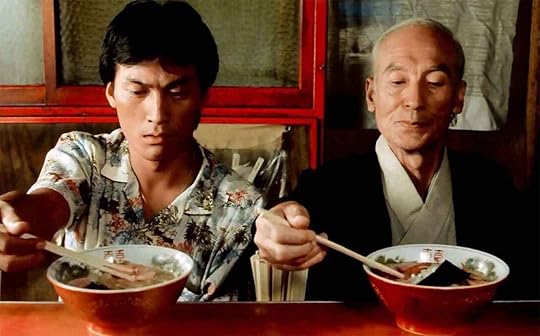
When it comes to movies that show the beauty of Asia, we’re spoiled for choice — yet only a few original language creations make it through to mainstream status here in the United Status. Some Hollywood productions show off the sights, but most end up just feeling like extended travel ads: pretty, but inauthentic. There’s a lot more to discover beyond Hollywood’s depiction of Asia. From steamy ramen bars and bamboo forests to the streets of Riyadh and the vast Gobi Desert, here are 10 films that show off the true beauty of this enormous continent.
1. My Neighbor Totoro — Japan
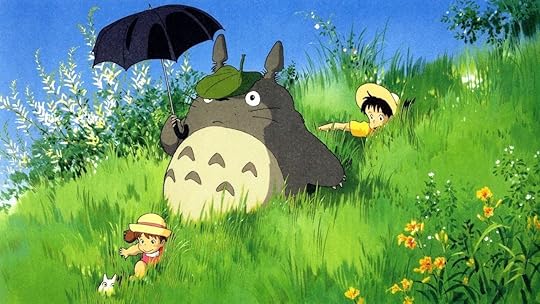
Photo: Studio Ghibli
Yes, it’s an animated movie, but Hayao Miyazaki has a way of capturing Japanese landscapes (and food) in a way that makes you want to book a plane ticket immediately. Released in 1988, My Neighbor Totoro fast became Japan’s most beloved family film, and Totoro — the film’s big fluffy star — is as popular in Japan as Mickey is in the US. The story follows two young sisters who move into an old house in the countryside where they meet a forest spirit called Totoro who lives under a tree in their garden. With an abundance of visual beauty, each hand-drawn frame evocatively depicts Japan in the summertime, from rice field harvests and shady woodland shrines to sprawling camphor trees that shimmer in the breeze.
For more stunning animated films that show Japan’s beauty, check out The Tale of Princess Kaguya, which is full of pastel-hued cherry blossom trees, and Princess Mononoke, an environmental epic that feels relevant now more than ever.
2. Spring, Summer, Fall, Winter… and Spring — South Korea
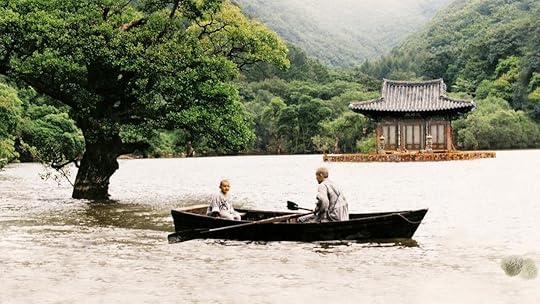
Photo: Sony Pictures Classics
Kim Ki-duk’s film takes place within and around a small house floating on a lake surrounded by steep cliffs of forest and stone. The little hut is occupied by a monk (Oh Young Soo) and a boy (Seo Jae Kyung) who’s learning to follow in his footsteps.
Don’t let the simplicity of the plot fool you into thinking it’ll be dull. It covers the whole spectrum of human experience, from faith and lust to cruelty, love, and redemption. Watch it for some of the most gorgeous imagery committed to film, including a monk hand-carving Chinese pictograms into a wooden floor, and the surrounding forest transforming through the seasons.
The movie was filmed at Jusanji Pond in Cheongsong County, North Gyeongsang Province, which you can visit yourself — although the small wooden house was part of the set and has long since gone.
3. The Darjeeling Limited — India

Photo: Fox Searchlight Pictures
The Darjeeling Limited follows three brothers on a train journey across India in an attempt to reconnect with each other. It has everything you’d expect from a Wes Anderson movie, including a palette of pastel hues, eye-pleasing symmetry and plenty of eccentric characters.
Thankfully, it skirts around exoticism and cliché themes of spiritual enlightenment and instead opts for a more introspective journey for the protagonists. Watch it for the charming shots of old Jodhpur, the faded grandeur of Rajasthan’s imperial architecture, and a dreamy train I wish existed in real life — sadly, it’s a creation of Mr. Anderson’s film team.
4. Tampopo — Japan

Photo: Toho
Mount Fuji, cherry blossoms, and bamboo forests are gorgeous, but you know what’s just as good? Ramen. Big bowls of steaming broth filled with noodles and topped with pork, scallions and a sliver of fishcake.
Japan’s popular soupy dish is the muse and star of Tampopo, a comedy about two milk-truck drivers (Tsutomu Yamazaki and Ken Watanabe) who help a restaurant owner (Nobuko Miyamoto) learn “the art of noodle soup-making.” The main story is interspersed with vignettes about food, including a raunchy moment involving a raw egg yolk, and another in which a noodle master explains the correct ritual for eating ramen: how to cook it, address it, think of it, approach it, smell it, eat it, thank it, and remember it. We challenge you to watch this one and not immediately crave a big bowl of noodly goodness yourself.
5. The Apu Trilogy — India
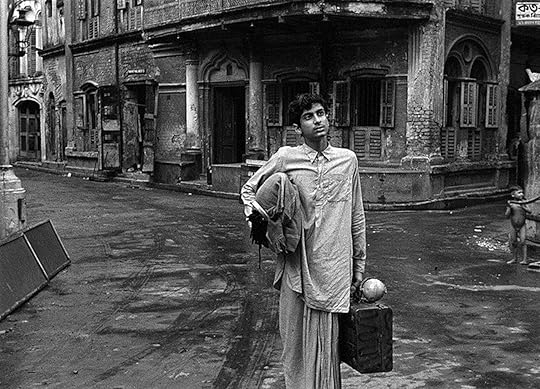
Photo: Government of West Bengal
For more India on film, check out Satyajit Ray’s Apu Trilogy, which shows rural life and Calcutta in the 1950s. The trilogy follows Apu from a boy living in his ancestral village to Calcutta as a young man, where he marries and is then devastated by the deaths of his mother and new wife. After drifting, he returns to take up the responsibility of his son.
Considered among the greatest films of all time, the trilogy rightly swept up the top prizes at the Cannes, Venice, and London film festivals. Incidentally, the music used in this trilogy features heavily in Wes Anderson’s The Darjeeling Limited soundtrack.
6. Bakara — Kuwait, Iran, Nepal… and more

Photo: Samuel Goldwyn Films
Ron Fricke’s mesmerizing non-narrative documentary film has to be one of the greatest travel films ever made. The director’s camera captures the spectrum of humanity and life on our planet, from Japanese subways and sprawling factories to the Himalayas and the oilfields of Kuwait. There are monks, kabuki dancers, steelworkers, and tribespeople. Scenes of worshippers in Mecca sit alongside images of scavengers atop an enormous Indian rubbish heap, apes bathing in hot springs, and sex workers huddled outside a brothel.
The film shows us that while not everything we encounter is picturesque or joyful, it is sad and beautiful in its own way. As the film critic Roger Ebert said in his 2008 review, “If man sends another Voyager to the distant stars and it can carry only one film on board, that film might be Baraka.”
7. A Touch of Zen — Taiwan
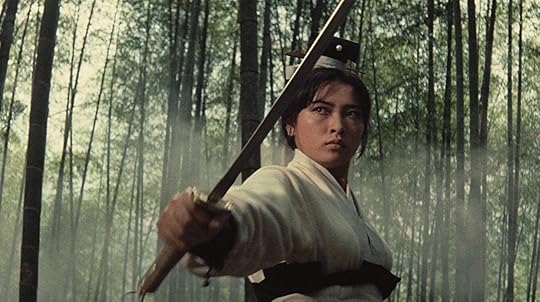
Photo: Union Film
King Hu’s grand-scale wuxia film A Touch of Zen (Xia nu) follows Yang (Hsu Feng), a fugitive princess seeking refuge in a remote, and apparently haunted, village. She and her three companions share a hut with a clumsy artist. All is fine until a swordsman uncovers her identity, pitting the group against scores of blade-wielding opponents. Watch it for the cinematic fighting scenes and epic widescreen shots of the mountains, serene forests, and towering cliffs of Taroko National Park, which makes a stunning backdrop to the protagonist’s spiritual quest.
8. In the Mood For Love — Hong Kong

Photo: USA Films
All of Wong Kar-wai’s films are unbelievably seductive, but In The Mood For Love is arguably the most gorgeous. Chow Mo-wan (Tony Leung Chiu-wai) and Su Le-Zhen (Maggie Cheung) move into neighboring rooms in a cramped apartment block. Their fleeting meetings are charged with chemistry yet remain polite and distant — until the mutual discovery of cheating spouses sparks an achingly restrained platonic love affair. The camera picks out elegant details: deep reds and velvety shadows, a lipstick-stained cigarette and steam rising from hot noodles, which blend perfectly with the deep baritone soundtrack of Nat King Cole’s voice. Watch it for the silk cheongsam dresses, a beautiful on-screen couple and snippets of life in British Hong Kong in the ‘60s.
9. Crouching Tiger, Hidden Dragon — China
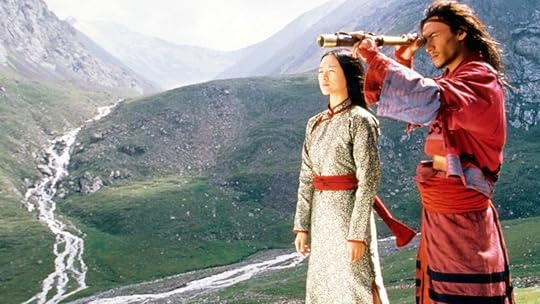
Photo: Sony Pictures Releasing
Ang Lee’s martial arts epic follows Master Li (Chow Yun-fat), a warrior who gives his jade sword to his lover Yu Shu Lien (Michelle Leoh) for safekeeping. When the sword is stolen, Li sets off on a journey to recover it. Expect lots of graceful fighting (choreographed by Yuen Wo-Ping of The Matrix fame) and ravishing cinematography that takes in some of China’s most stunning, yet lesser-seen sights — including the Taklamakan Plateau, the Gobi Desert, and Qing Ming Song Village. As for the famous bamboo forest battle scene, it was filmed in the Southern Sichuan Bamboo Sea near the border of Changning and Jiang’an.
10. Wadjda — Saudi Arabia
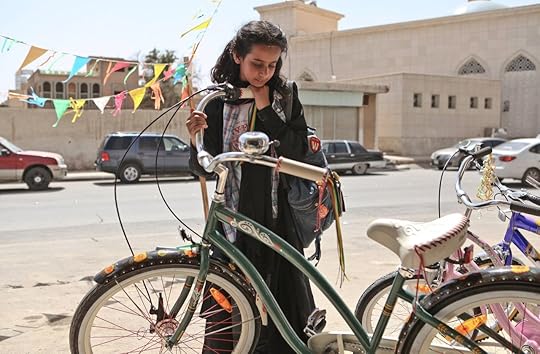
Photo: Koch Media
Some films depict beauty; others are beautiful just because they exist. Wadjda, directed by Haifaa al-Mansour, is both. It’s not only the first feature film shot entirely in Saudi Arabia but also the first feature-length film made by a female Saudi director — and it throws the doors wide open on life and culture in this famously secretive country.
The genuinely heartwarming film follows 11-year-old Wadjda (Waad Mohammed), a girl in a middle-class family who pushes back against the rules that stifle her: she listens to Western music, loves bike racing, and wears skinny jeans underneath her abaya. After spotting a green bicycle on her way home one day, she decides to save up and buy it, so she enters a Quran recitation competition in the hopes of winning the grand prize.
Though businessman and Saudi royal Prince Alwaleed bin Talal supported the production, he did not make the working conditions easier for al-Mansour. The government ban on women working with men in public meant she had to communicate with the cast from inside a van using a walkie-talkie and computer screens. Despite the difficulties, the film was made, well-received and went on to win awards around the world. 

More like this: 10 films that show the beauty of Europe
The post 10 films that show the beauty of Asia appeared first on Matador Network.

Greenpoint Cats work during lockdown
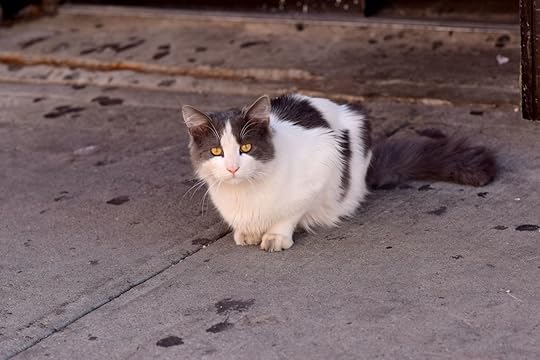
The wellbeing of one particular demographic has been relatively overlooked during the coronavirus crisis. Cats residing in convenience stores, delis, and small community grocery stores have found themselves without homes as stores close due to lockdown orders. But an organization called Greenpoint Cats is trying to help newly homeless cats in Brooklyn.
View this post on InstagramA post shared by Greenpoint Cats (@greenpoint_cats) on Apr 4, 2020 at 6:05pm PDT
Becky Wisdom, the organization’s founder, has looked after a Franklin Street cat colony since 2018 and has since extended her aid beyond the Greenpoint neighborhood. As the pandemic hit Brooklyn, however, Wisdom noticed that as bodegas and delis started shutting down, their shop cats were left behind, and many of whom were not being fed or cared for.
View this post on InstagramA post shared by Greenpoint Cats (@greenpoint_cats) on Oct 1, 2019 at 5:26pm PDT
“Since mid/late March when stores began closing due to the Covid crisis,” reads a statement from the organization, “we’ve feared we might begin seeing abandoned shop cats and in the past week we’ve looked into a few different locations where we heard there might be cats that had been left behind. Additionally, we’ve found two distressed friendly cats in the neighborhood that we suspect are displaced shop cats. (One cat has already been adopted, the other is in our care and will be available for adoption soon.) We are encouraging both residents and store owners to help ensure the safety and well-being of shop cats during the crisis. If you notice a store has closed and you recall a cat was living there, place an inquiry with the owner or landlord….or with us! We can also help arrange for foster for cats that are either temporarily displaced or are not receiving sufficient care inside the store while it’s closed.”
This year alone, Greenpoint Cats has already spayed or neutered over 40 cats, though vet closures are making this process increasingly difficult. In addition to caring for Brooklyn’s outdoor cat population, and ensuring that abandoned store pets are being fed, the organization has also started rescuing cats from coronavirus patients’ homes. 

More like this: Adventure cats are taking over Instagram and coming for travel dogs’ reign
The post Brooklyn organization cares for abandoned bodega cats during lockdown appeared first on Matador Network.

Best things to do in Juneau, Alaska

Those of us in the Lower 48 may think of glaciers as remote, exotic formations that require overnighting at an alpine base camp in order to be seen. But residents on the north side of Juneau, in southeast Alaska, can just look out at the 13-mile-long Mendenhall Glacier over their morning coffee. In fact, Juneau’s city bus takes you right to the glacier’s visitor center.
Although roughly 6,000 people stream off cruise ships into Juneau daily from May to September, most of them cluster by the docks, with their nearby t-shirt shops and tourist kiosks. They miss the quiet streets that creep up the steep slopes away from the water, where the atmosphere resembles any trendy Pacific Northwest neighborhood — complete with craft distilleries, seafood restaurants, and stylish coffee shops.
Unusual modes of transportation

Photo: Jing Zhong/Shutterstock
Juneau lies on the thin, coastal stretch of Alaska that juts south from the rest of the state and abuts the northern edge of Canada’s British Columbia province. The buffer islands between Juneau and the open waters of the Gulf of Alaska protect it from the harshest ocean swells and add to the stunning view. In recent years, the city has shed its image as merely a sleepy state capital and has embraced its outdoors bona fides. And, thanks to a landscape seemingly tailor-made for Instagram — all obsidian waves and glacier-carved glens — Juneau will strike visitors as a close-by version of Iceland or New Zealand.
To orient yourself, you can board the Mount Roberts Tramway for aerial views of the city. The only such tramway in southeast Alaska, the tram rises 1,800 feet from the cruise ship dock in downtown Juneau through the rainforest to the Mountain House, offering expansive views of Juneau and Gastineau Channel.
From up here, the cruise ships looked like pieces arranged on a Battleship board and offered a contrast with my mode of conveyance: one small, intimate, and ethereal, the other massive, a floating city implacably — and from this distance, imperceptibly — moving across the ocean.
Juneau is the second-largest city in the United States by land area. In reality, Juneau is not connected to the rest of the state by pavement. You can drive the city’s road system in about a half-hour. Once you hit the end of the road, transportation here takes the form of puddle-jumping passenger jets, helicopters, floatplanes, ferries… and dog sleds.
Dog sledding in the summer
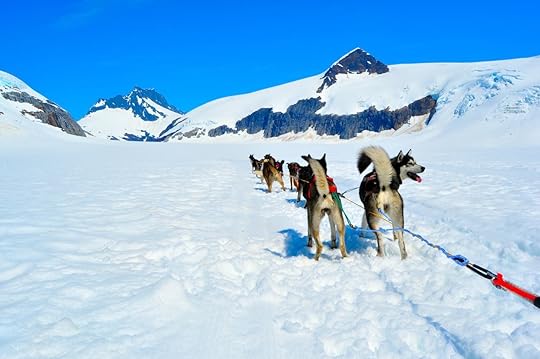
Photo: orangecrush/Shutterstock
I had come for those dog sleds. In the thick of a smoky, hot summer in the Lower 48, the 1,500-square-mile cooler known as the Juneau Icefield promised relief. And a trip with Alaska Icefield Expeditions to the summer dog-sledding camps on the icefield promised a unique way to experience it.
A small helicopter took me and a handful of other dogsled participants from Juneau International Airport. Under high summer clouds, we quickly ascended out of town. Although the peaks immediately surrounding the city only top out at around four thousand feet, they rise from sea level to subalpine in a matter of minutes. Below us stretched impossibly green alpine tundra, snowmelt-swollen creeks sluiced through steep hanging valleys.
Fewer than 20 minutes later, we stepped off the helicopter and onto the doorstep of a tent village.
There’s no off-season for sled dogs. When the tundra thaws in the summer, Iditarod- and Yukon Quest-winning Alaskan mushers move their packs to train on the Juneau Icefield, a large ice mass from which about 30 glaciers flow. (Two of these, Mendenhall and Lemon Creek, are visible from the local road system.)
It’s one of the continent’s only summer sledding locations. It’s also one of the few places that the layperson can experience the high-speed, husky-fueled action of an Iditarod competitor without the dead-of-winter discomfort of mushing’s high season.
Here in the base camp, guests huddled around husky pups while mushers mingled among them answering questions about the dogs, pointing out this or that husky’s personality traits and position in the pack.
Sated with puppy snuggles, we climbed aboard the dog sleds for a spin around the icefield. The sled runners thrummed with the pent-up energy of a dozen Alaskan huskies. At the “Hup!” of the musher, the sled snapped into movement before settling into a steady rhythm. Jagged spires of rock, stained dark with snowmelt, passed by as we cruised the gradual downslope of the icefield. But for the pleasant temperatures, we could have been in the thick of the Iditarod.
Exploring ephemeral ice caves
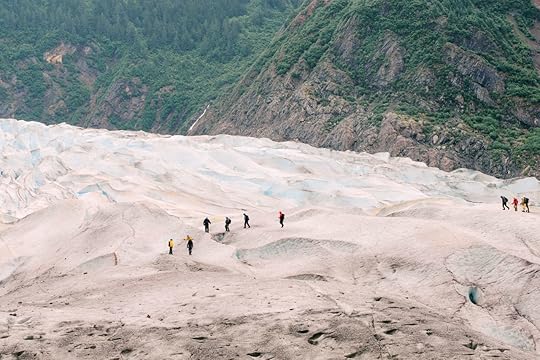
Photo: Aaron Theisen
No trip to Juneau is complete without exploring its glaciers. On my final full day in town, I took advantage of perhaps the best way of exploring the area: with a pair of hiking boots.
I joined a guided trip with Above and Beyond Alaska on the West Glacier Trail, a strenuous seven-mile, round-trip hike to the ice caves at the toe of Mendenhall Glacier. Its proximity to town makes Mendenhall Glacier an appealing day hike, one of a score in the fjords and old-growth forests of the Juneau area. (Because of the potential instability of the ice caves as they gradually thaw and thin throughout the summer, it’s wise to visit them with a guide who can suss out their stability before entering.)
After getting our group equipped with crampons, climbing harnesses, and helmets in the parking lot, our guides navigated the braided, sometimes boggy, network of footpaths that trace the west shore of Mendenhall Lake.
Shouldering aside the alder branches, we climbed the bare bedrock above the lake, long grooves in the rock evidence of the glacier’s grinding advance millennia ago. Markers along the trail show the glacier’s retreat, which has accelerated in recent decades.
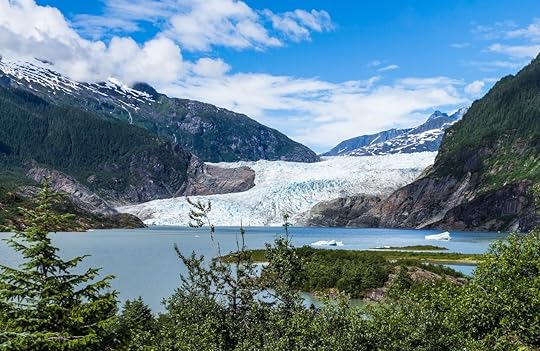
Photo: fon thachakul
Here we had our first glimpse of the scalloped and sun-cupped toe of the glacier, shepherded into the valley by a quartet of peaks: McGinnis Mountain, Mount Stroller White, Mount Wrather, and Bullard Mountain. Below us, kayakers plied the lake, its green hue a result of flecks of minerals mixed into the water from the melting ice.
Reaching the mouth of the ice caves, we donned helmets while our guides probed the cave walls. Given the all-clear, we stepped into another world. Just above our heads, opaque waves of ice let in a pale light that illuminated the meltwater creek at our feet. Our guides pointed out the diminished form of the wall of an early-summer ice cave, noting that the cave in which we were standing would likely be gone by the end of summer; on this mid-August day only a few frozen foundation pieces remained, these due to disappear by September.
Back outside the caves, we cinched tight our crampons before kick-stepping our way onto the surface of the glacier. Here, between a moody sky mirrored in the blue-white expanse of ice, we looked upon a landscape both implacable and impermanent. The glacier on which we stood had carved the valley before us, scooping a lake out of its surface. But it also created the delicate ice caves that welcomed visitors for only a few short months each summer. In the distance, Alaska’s capital bustled. 

More like this: How to road trip from Anchorage to Denali, even in winter
The post In Juneau, Alaska, summertime means dog sledding and ice-cave hiking appeared first on Matador Network.

A guide to mindfulness in Milwaukee

These days, just the thought of getting on a plane, standing in lines, and going through security creates anxiety for even the most gregarious of passengers. Travelers seeking serenity when visiting Milwaukee will find that the bustling city offers several options to practice mindfulness. Whether looking for traditional meditation centers, instructive yoga, floating in a pod, or sitting in a quiet room before boarding a plane, here are a few ways to find calm in or near the city.
1. MKE Airport Meditation Room

Photo: MKE Airport
Busy visitors who want to pack in as much as possible while traveling may feel exhausted at the tail-end of a trip. Running from shops to galleries to restaurants and making sure to get the perfect Instagram shot can leave even the most adventurous feeling ragged. Milwaukee’s Mitchell International Airport offers a space to recharge. The meditation room is adjacent to the 3 North Skywalk, and tourists are invited to “Come, Rest, and Renew.” The space ensures the inclusivity of all faiths and is a place of peace where everyone can feel welcome. Visit no matter what time you fly — the meditation room is open 24 hours a day, seven days a week, and though there’s no fee to use the room, donations are accepted.
Where: 5300 S Howell Ave
2. Milwaukee Mindfulness Practice Center
Voyagers interested in the practice of loving-kindness or Metta meditation will find the Mindfulness Community of Milwaukee a great place to find calm. Paul Norton, the center’s Spiritual Director, invites anyone interested in learning or practicing mindfulness into the center, even if it’s only a one-time pop in on a quick trip. Norton found meditation helped him deal with the stress of being a young physician trying to start a practice while raising a family. “We are believers in daily mindfulness and emphasize mindfulness in everything we do,” he says. The classes are free and great for beginners. Multiple locations offer convenience and ease to attend no matter what part of the city you find yourself.
Where: 1922 E Park Pl
3. Great Lakes Zen Center

Photo: fizkes/Shutterstock
Meditators interested in the more formal Korean Zen practice will enjoy sessions at the Great Lake Zen Center on Tuesday evenings and Saturday mornings. The center is affiliated with the Kwan Um School of Zen in Rhode Island. Susi Childress serves as the Head Dharma Teacher and has been instructing since 2001. To learn more about zen meditation, introduction classes are held on the first Tuesday of each month before practice. The center also offers special events and half-day retreats. If you’re new to the practice, you’re welcome at any session though Childress asks first-timers to arrive 15 minutes prior to the start time for a review of meditation techniques. Check the website to see a schedule of free walk-in intro to meditation classes offered while you’re in town.
Where: 1721 S 81st St, West Allis
4. Milwaukee Zen Center
For over 30 years the doors have been open to the public at the Milwaukee Zen Center, inviting all to join in Zen practice. The current resident priest, Reverend Reirin Gumbel, offers a regular schedule of insight meditation, weekend dharma talks, and introduction to intensive daily and monthly sittings. Beginners’ instructions and information on Zen practice are available Wednesday evenings at 6:30 PM and Sunday mornings at 9:00 AM. “I’m available onsite to have conversations with anyone who may have questions,” Gumbel says. “There’s also a library that is accessible for anyone who is interested in reading.”
As a Japanese-trained monk, Gumbel’s own journey of battling depression lead her to train and later become a monk. “I was suffering and I don’t know that I would have continued [to live] because there was too much pressure in life.” She said that the Zen practice helps her deal with life’s stresses differently now, recognizing that it’s a choice to suffer. The center encourages young adults to participate in solidarity and community building to encourage the practice. Contact the center for information on classes available while you are in town and the current drop-in rates.
Where: 2825 N Stowell Ave
5. Float Milwaukee

Photo: FloatMilwaukee/Facebook
Sitting still isn’t for everyone, but some may find it an enjoyable practice to float away stress. Float Milwaukee offers pods to immerse yourself in, eliminating external stimuli with the goal of renewing the senses. Visitors sit in a 200-gallon tank surrounded by 900 pounds of dissolved Epsom salts, and the water is heated to average skin temperature, all but eliminating the sensation. The goal is to feel as though you are “drifting in empty space.” Each float costs $75, but after the session, you can enjoy a cup of organic tea in the sitting room before reentering the world.
Where: 211 W Freshwater Way
6. Shambhala Meditation Center of Milwaukee
Located north of the city center, the Shambhala Meditation Center offers beginners as well as continuing students meditation instruction through daily sessions. The center’s mission is to provide a supportive and healing environment for those who come seeking to ease their suffering. No prior meditation experience is required to attend, and if you’d like a bit of motivation, instruction is available every first Sunday at 9:00 AM. For advanced meditators, every third Sunday the center offers sitting practice from 9:00 to 10:00 AM in one of the following practices: Maitri Bhavana, the Shambhala Sadhana or Sadhana of Mahamudra.
Where: 2344 N Oakland Ave
7. Mindful Matters Wellness

Photo: puhhha/Shutterstock
Globetrotters suffering from aches and pains may benefit from a Myofascial Release offered at Mindful Matters Wellness. This is a hands-on massage technique in which a therapist applies gentle pressure into connective tissues helps to decrease pain and restore motion. The procedure is a safe and gentle form of bodywork that is extremely effective in improving circulation and body movements. MFR sessions utilize muscle relaxation techniques, as well as guided meditation and breath, and are scheduled for an hour to provide sufficient time for direct treatment. A session is $115 and requires pre-purchase with a credit card to schedule an appointment. Be sure to wear loose-fitting, comfortable clothing. The wellness center also offers pilates and yoga in the studio on Milwaukee’s Eastside.
Where: 1845 N Farwell Ave #200
8. Himalayan Yoga & Meditation
If you’re looking for little movement with your meditation, check out the Himalayan Yoga & Meditation Center. It offers a wide variety of classes in meditation, yoga, and wellness taught by local faculty with years of training and practice. The center offers workshops and seminars from scholars and teachers from around the world in addition to yoga therapy with visiting yogis. All ages, all levels of experience, and members of all faiths are welcome. HYM’s ancestral practice originates in the authentic Himalayan Tradition, and its community of aspirants here in Milwaukee has been built over 40 years (though it’s as welcoming as ever to travelers). It’s a unique opportunity for both beginning and experienced students of yoga-meditation. Drop-in yoga classes are $15 and $10 for seniors.
Where: 5000 W Vliet St 

More like this: Where to eat, drink, and stay near the Milwaukee convention center
The post Where to practice mindfulness in Milwaukee appeared first on Matador Network.

5 unrelenting black travel icons

Black people around the world have been privy to fascism that restricted their movement throughout history. Be it during apartheid in South Africa, in the maligned Chocolate City in Guangzhou, or within Jim Crow America, preventing black people from traveling has historically been used as a tool of oppression. But just as we’re finally entering onto the world scene en masse and getting passports in record numbers, 2020 brings us COVID-19 and grounds us all once more.
If you’re feeling like we’ll never get to go anywhere ever again, remember that folks just like us have had to overcome much more in order to achieve their travel goals. While we’re all waiting for our fates to change, check out these five unrelenting black travel icons to remind you that this too shall pass.
1. Bessie Coleman
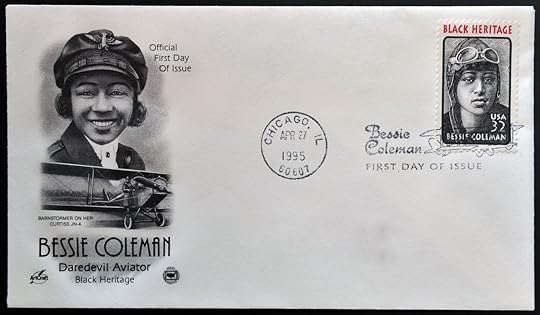
Photo: neftali/Shutterstock
“The air is the only place free from prejudices.”
On November 20, 1920, Bessie Colman left her home in Chicago, Illinois, to pursue her dream of obtaining a pilot’s license in Paris, France. Though she had set aside her savings from working as both a manicurist and a server, her travel and tuition costs were supplemented by famed black banker Jesse Binga after he was so moved by an account of her pursuit to learn to fly that he had read in the Chicago Defender.
At the time, there was no avenue for her to study aviation in Jim Crow America as no flight school would accept black or native American people, and Coleman was both. Within less than a year after leaving Chicago, Coleman became the first Native American, as well as the first black person, to earn a pilot’s license at the Fédération Aéronautique Internationale.
Her return to Chicago caused a commotion in the media, though her instant fame was not enough to find an American mentor in her chosen career: exhibition flying. Still saddled by the limitations of being a black woman in America, she sailed again for Europe in early 1922 to seek out someone to train her. Her travels took her back to France, as well as to the Netherlands and Germany where she found those willing to train her in advanced and trick flying. She returned to Chicago a skilled, fearless aviatrix and always remained a fierce advocate of the plight of black people in America. In her entire career, she never once agreed to perform in an event that did not allow the attendance of black people.
Her unprecedented American career in exhibition flying was unfortunately short-lived. Only five years after receiving her pilot’s license, she was ejected from her plane after it fell into an unplanned dive in Jacksonville, FL, and she was killed instantly when she hit the ground. Her body was returned to Chicago to be interred, to little fanfare in the wider American media. The African American press, however, covered it widely, and 10,000 mourners came to the services held to honor her in Chicago, a service led by none other than famed journalist and co-founder of the National Association for the Advancement of Colored People, Ida B. Wells.
2. Miriam Makeba

Photo: African Activist Archive Project
“But if you are going to wear blinders then you do not know the world.”
On March 21, 1960, the Sharpeville police opened fire on 20,000 people who gathered outside their police station to protest apartheid. The famed Mama Africa — or Miriam Makeba — lost two members of her family in that hail of gunfire and, in a roundabout way, her South African passport. The Sharpeville Massacre was the moment for Makeba when her personhood became inextricable from her anti-apartheid views, and the eventual casualty of her insistence that her increasingly “political” music was merely the truth was her nationality. Already a long time resident of the United States, Makeba’s South African citizenship was officially revoked by the apartheid state in 1962.
Though she wouldn’t be able to return to her homeland until 1991 at the prodding of Nelson Mandela himself, the years between saw her traveling, performing, and living all over the world. She made best friends of folks like Harry Belafonte, Nina Simone, and Dizzy Gilespie while recording several albums, embarking on many tours, and generally maintaining wild success in her music career.
Over the course of her life, Makeba would collect five husbands, but even more impressively, she collected passports from nine different nations, thus saving her from statelessness during her 30 years of exile. Along with her native South Africa, Makeba would attain papers from Ghana, Guinea, Tanzania, Sudan, Algeria, and eventually France. Possibly most interestingly was her 1972 acquisition of a passport from Cuba, which was issued by Fidel Castro himself.
In November 2008, she began to feel ill while performing at the Castel Volturno in Italy and had a heart attack during her hit song, Pata Pata. She was delivered unconscious to a nearby clinic where physicians were unable to revive her. And so, at 76 years old, the extraordinarily talented and traveled Zenzile Miriam Makeba died some 6,000 miles away from the Johannesburg-adjacent township that she was from.
3. Matthew Henson
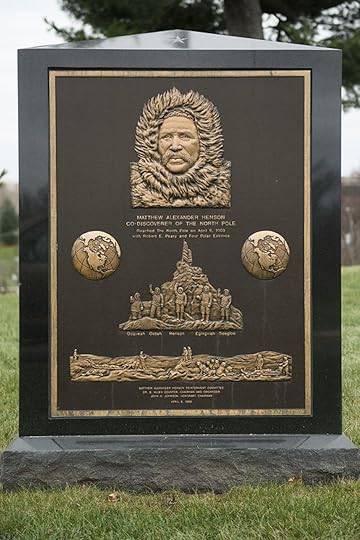
Photo: Arlington National Cemetery
“The path is not easy, the climbing is rugged and hard, but the glory at the end is worthwhile.”
In the fall of 1909, Matthew Henson looked back at his longtime boss and benefactor, Robert Peary, who, be it from frostbite or exhaustion (there are conflicting accounts), was reclined in a dogsled deep inside the Arctic. Braced against the cold and armed with only simple tools, Henson trudged ahead with a few Inuit expeditioners and, without guidance nor direction from Peary, planted the very first flag at the north pole, which bore the colors of the United States.
Though there was a competing claim filed by Frederick Cook, the National Geographic Society and the Naval Affairs Subcommittee both validated Peary’s expeditions’ claim to having reached the pole first. But because they were all Americans in the early 20th century, the acclaim that Henson deserved went to his white boss, Peary, even though he was lounging in a sled while his black employee, Henson, completed one of the most important expeditions in history.
Not until 1937 would Henson really begin to receive the credit for his incredible accomplishment. That was the year he was admitted to New York’s Explorers club, and 11 years later, this membership was promoted to an honorary one. Three presidents eventually honored Henson, two of them, Eisenhower and Truman, before his death in 1955. The third was Regan, who oversaw his reinterment at Arlington National Cemetery in 1988.
4. Kelle Edwards

Photo: Kellee Edwards/Facebook
“As a woman and as a black person, in order to get into these spaces, we have to be overqualified.”
In the spring of 2011, Kelle Edwards waited in a long line at the Travel and Adventure Show in Long Beach, California, to meet the Travel Channel’s Samantha Brown. That day, as a mere fan at a trade show, Edwards shared with Brown that she, too, would like to host her own show on the Travel Channel one day.
Saddled with this somewhat vague dream, Edwards’ first task would be to increase her skill set. In order to appeal to the executives at such a prestigious network, she would have to be able to offer something no one else could. To that end, she became a certified diver, a licensed pilot, and an accomplished mountaineer. She already had a degree in broadcast journalism from Howard University, so in hindsight, it’s easy to see how her show, Mysterious Islands, premiered on the Travel Channel in 2017, just six years after revealing her secret dream to a fellow host at a trade show.
Originally from Chicago’s South Side, Edwards credits her wanderlust to a trip she endured on a Greyhound bus when she was young. Through the windows of that bus, she saw mountains for the first time, as well as many landscapes that she didn’t realize even existed growing up in the city. When she disembarked in San Bernardino, California, where she would spend the rest of her childhood, she was forever changed, and she has sought the secrets of the wide world and the great outdoors ever since.
5. Cheraé Robinson
View this post on InstagramA post shared by Cheraé Robinson (@sasyrae) on Dec 2, 2019 at 8:52am PST
“Find that strange balance between humility and confidence and manage it well.”
In Nigeria in 2011, fashion designer Jeffrey Kimathi and filmmaker Wanuri Kahiu made a new, American friend they decided to show around town. Brought together by Social Media Week Lagos, these three visited some of the finest restaurants, best clubs, and most interesting spaces that Lagos has to offer. Although she was already very traveled, their American friend, Cheraé Robinson, was still unaccustomed to seeing Africa as a bustling, contemporary, and innovative locale. That night she committed herself to bring this part of African culture to the rest of the world, and four years later she launched Tastemakers Africa, an app that connects local guides from African metropolises to tourists.
Between that night in Lagos and the launch of her app, Robinson traveled all over Africa, consulted with a myriad of other black entrepreneurs, and even won $10,000 in start-up capital in the SheLeadsAfrica pitch competition. Part of the reason she has seen such incredible encouragement is that her vision for the business goes far beyond a simple tourism brand: She is positioning herself and her company to be an agent of the fundamental change in the way the world views the African continent.
By dismissing the pervasive narrative that keeps Africa exoticized and pitied, Robinson aims to foster more honest cultural exchanges by allowing its own citizens to be the purveyors of the African experience. To a lot of the rest of the world, Africa is merely seen as a place to go on safari or volunteer, but by proving the available variety of African experiences, Robinson believes that conceptual ideas about Africa and Africans will begin to change as well, all while supporting legitimate African creatives in their cultural pursuits.
The eldest of five children, Robinson, originally from Long Island, NY, is a trained scientist, having studied biology at Morgan State University in Baltimore. She sees this as a huge asset to her business even though Tastemakers heavily relies on creatives and their pursuits, and she credits her analytical mind for much of her success. 

More like this: What it’s like to be a black American woman abroad during COVID-19
The post Tenacious black travel icons who fought to achieve their travel goals appeared first on Matador Network.

Ima Keithel, India’s women's market

We’re accustomed to hearing about centuries-old traditions dominated by patriarchal practices, so it’s refreshing to remember one tradition that’s all about women, and has been for nearly 500 years. Ima Keithel, which translates to “mother’s market,” is a market in India entirely managed by women. Located in the city of Imphal, the capital of the Manipur state, Ima Keithel is the largest all-women market in Asia, with around 5,000 women in charge of its various stalls selling textiles, handcrafted items, produce, and pretty much anything else you can imagine. Even though Ima Keithel has been running since the 16th century, it remains to this day the center of socioeconomic activity in Imphal and a unique symbol of female empowerment.
The birth of the market
In 1533, the Lallup-Kaba labor system took effect in Manipur, which required male members of the community to either join the army or go cultivate lands far from home. The women remained in the villages and were then forced to look after their own welfare. Without the men, the women of Manipur became self-sufficient, working their own paddy fields and weaving textiles. They sold these goods at improvised markets, the largest of which became Ima Keithel.
Because the market served as the center of the city’s economy, it thrived for over 300 years and gave the women of Imphal a self-sustaining revenue stream that allowed them to be economically independent from men. However, Ima Keithel wasn’t destined to move forward without obstacles.
The “Women’s War”
Lallup-Kaba, which had served as the catalyst for the market’s inception, was abolished in 1892, but it was soon replaced by other forms of forced labor and conscription, which continued to call men away from home. The repeal of Lallup-Kaba wasn’t what threatened Ima Keithel the most — it was rather the restrictive economic reforms imposed by Great Britain, now a colonizing power in India.
The British, who enjoyed complete political control over Manipur, started exporting locally grown rice to other countries, raising taxes on water, and instituting other economically crippling reforms in the late 1800s. In 1939, the women of Ima Keithel decided they would instead fight fiercely against these strict new laws. The Nupi Lan, or Women’s War, was led by the women traders of the market, who organized meetings, rallies, and even blockades to protest the changes in economic policy.
In response, the British waged war against the Ima Keithel, attempting to sell off the market’s buildings. The women successfully defended it, considering it a bastion of their community’s identity. They even went as far as to occupy the Presidential building in Imphal and request an audience with the Maharaja. When the military fired on the protestors, leaving many women wounded, many men in the city were incensed by the violence and inspired to join the women’s cause.
The British government’s war against the women of Ima Keithel largely came to an end when World War II broke out and priorities shifted dramatically.
Ima Keithel today
Today, Ima Keithel is governed by a union of women. The union manages the market and determines its rules and practices. For example, there is a credit system run by the union wherein women traders can borrow money from the union to purchase goods for their stalls on the condition that they pay it back later. The union also upholds the rule that only married women are allowed to trade and run the stands — a tradition that dates back to the 16th century.
The market is divided into four parts. Metals are sold in the southeastern corner, rice traders occupy the northeastern corner, fishmongers dominate the southwestern corner, and paddy is sold in the northwestern corner. Hundreds of years ago, each corner was occupied by women of a different clan, but while the clan system no longer exists, the basic structure of the market remains. The market is split into two sections, one on each side of the road. Vegetables, fruits, fish, and groceries can be found on one side while handmade products and household items are sold on the other.
While the market’s future is relatively bright right now, especially compared to its tenuous outlook during colonial rule, it is still threatened by modernization and industrialization. Most recently, the construction of a supermarket near the site of the market has sparked fears among the women of being displaced by the new complex’s infrastructure. As before, the women are uniting to defend their beloved market and protect not only the stalls themselves but also the history, tradition, and empowerment it represents. 

More like this: The world’s most spectacular farmers markets
The post Ima Keithel, India’s all-female market, has been empowering women for nearly 500 years appeared first on Matador Network.

Sheep gather around Welsh McDonald’s
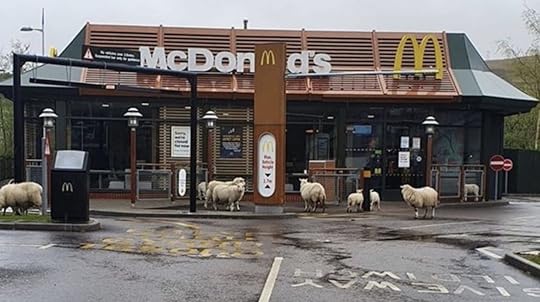
McDonald’s probably won’t be the first restaurant you go to once the lockdown is lifted, but when you’ve gone weeks without setting foot inside a restaurant, even McDonald’s starts to look pretty good. One flock of sheep in Wales can’t wait until lockdown restrictions are officially lifted and are already lining up outside the door of this McDonald’s in Ebbw Vale.
Andrew Thomas, who captured the photo and shared it online, via ITV News, said, “Even the sheep in Ebbw Vale are having McDonald’s withdrawals.”
“There are always sheep wandering the streets of Ebbw Vale where they come down off common but never seen them in McDonald’s before. I was leaving Aldi next door after doing some shopping for my mother who is in isolation and stopped on the way out to take the picture.”
The appearance of the sheep isn’t totally surprising, however, given how other animals have been behaving during the lockdowns. In the absence of humans, animals have been emboldened to range from their usual habitats and wander into empty city streets or park trails. Elsewhere in Wales, for example, goats descended upon the town of Llandudno, raiding gardens and enjoying not seeing humans around. 

More like this: In these locked-down cities, animals are taking over the vacant streets
The post A flock of sheep gathered outside an empty McDonald’s in Wales appeared first on Matador Network.

Milan road system post lockdown
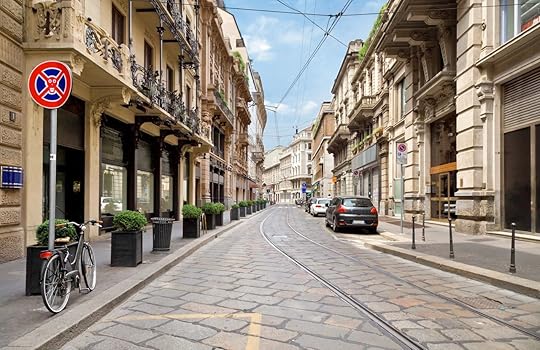
Milan, one of the cities hit hardest by the coronavirus, is already looking toward post-pandemic life. Once the lockdown is lifted, the city is set to introduce a plan that will encourage cycling and walking, rather than driving. Over 22 miles of streets will be transformed during the summer to place greater emphasis on cycling and walking, expanding cycling lanes and pedestrian areas.
The city, which is one of Europe’s most polluted, is implementing the measure partly to reduce vehicle emissions; pollution is down in the city since the lockdown. The plan would also address the demand for more cycling and walking space, as most of Milan’s residents commute short distances.
The plan also includes widened sidewalks, new speed limits, and cyclist and pedestrian priority streets.
Marco Granelli, deputy mayor of Milan, told The Guardian, “We worked for years to reduce car use. If everybody drives a car, there is no space for people, there is no space to move, there is no space for commercial activities outside the shops. Of course, we want to reopen the economy, but we think we should do it on a different basis from before.”
Infrastructure work could begin as soon as early May, with the installation of new cycle lanes and widened sidewalks. The rest would be completed by the end of the summer.
Janette Sadik-Khan, former transportation commissioner for New York City, is working with Milan on this program and believes the city could be an example for others around the world as they emerge from coronavirus lockdowns.
“The Milan plan is so important is because it lays out a good playbook for how you can reset your cities now,” she told The Guardian. “It’s a once-in-a-lifetime opportunity to take a fresh look at your streets and make sure that they are set to achieve the outcomes that we want to achieve: not just moving cars as fast as possible from point A to point B, but making it possible for everyone to get around safely. I know we’ll be looking to Milan for guidance from New York City.” 

More like this: Why you should visit Milan even if you aren’t into fashion
The post Milan is planning an overhaul of its road system to encourage biking post lockdown appeared first on Matador Network.

Farms renting out animals for videos

In this new era of video conference calls, a little playful change can be refreshing. That’s why the Sweet Farm animal sanctuary in Half Moon Bay, California, is launching “Goat 2 Meeting,” a new service that injects some much-needed face time with animals into your otherwise boring meeting.
The animal sanctuary, funded by grants and donations that come from tours and corporate events, has suffered financially during the coronavirus crisis. “Sixty to 70 percent of our revenue has gone out the door,” said Nate Salpeter, one of the farm’s owners. “So very quickly we had to figure out a way that we can still execute our mission while also driving revenue.”
Sweet Farm is offering up Paco the llama, Juno the goat, Magnolia the cow, or even Steve the rooster, as potential guests on your next video calls.
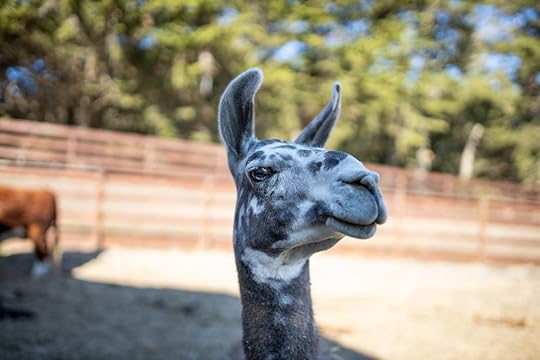
Photo: Sweet Farm/Facebook
Rebellyous Foods CEO Christie Lagally, who enlisted the farm’s services to lift the mood of her employees, said, “There was a quite a bit of squeals with joy as a fun diversion in the middle of a very busy Monday morning. Some of them were kind of coming in to eat or coming in from grazing, so…they’re very busy animals it seems like. I’m glad they took time out of their day to meet with us.”
Sweet Farm isn’t the only one running with this idea. The Peace N Peas Farm in North Carolina is renting Mambo, an eight-year-old miniature donkey, and his friends, to similarly participate in company conference calls.
Francie Dunlap, Mambo’s owner, said customers can reserve 10 minutes with the animals for $50, and she has already received a wide range of requests — including from teachers looking for a fun addition to their virtual classrooms. 

More like this: Amateur photographer captures extraordinary shots of a cross fox in Canada
The post Farms are renting out animals for appearances on company video calls appeared first on Matador Network.

Matador Network's Blog
- Matador Network's profile
- 6 followers



